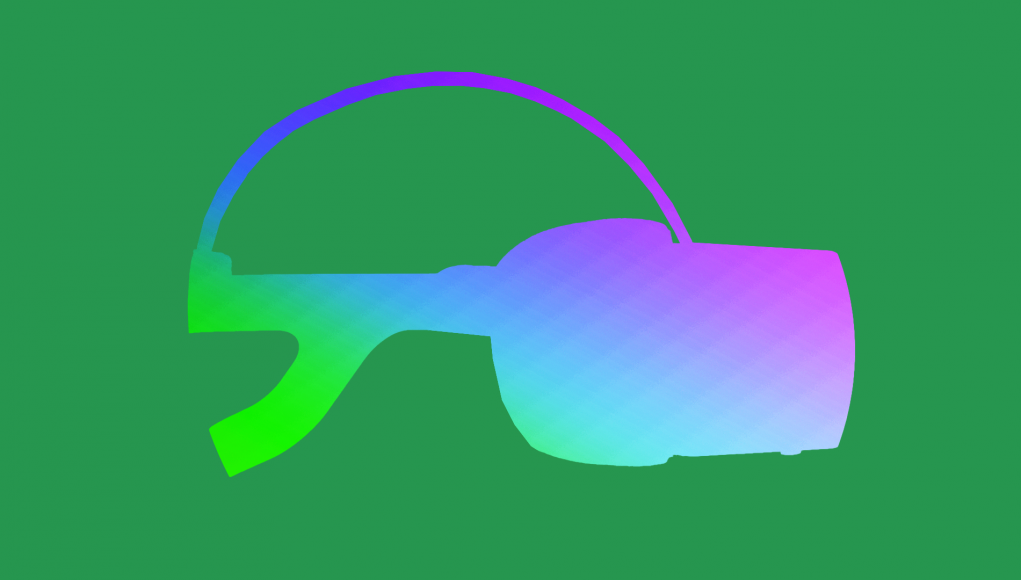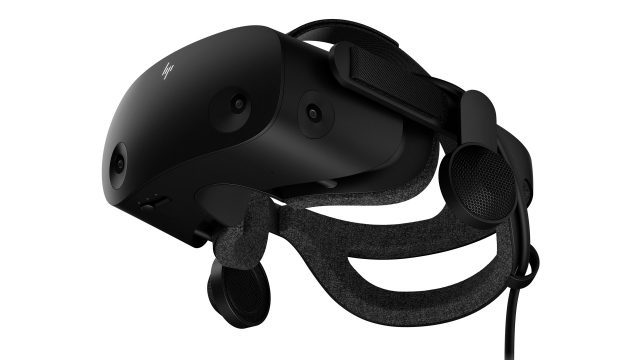With more VR headsets on that market than ever and even more upcoming, it’s tough to know where to start. In this article we’ve pulled together a concise look at the best VR headsets currently available.
We’ve refreshed our list with the latest info. Here’s a quick summary of changes:
- Added Quest Pro to ‘Ultra Enthusiast’ in Standalone VR section
- Prices and availability updated
- Latest information on PSVR 2 added to Console VR section
Jump to:
Best PC VR headsets | Best standalone VR headsets | Best console VR headsets
The Best PC VR Headsets in 2023
PC VR is where you’ll find the highest quality visuals and the most ambitious VR games like Half-Life: Alyx. Of course, you’ll need a reasonably powerful gaming PC to plug your headset into. See this article for the specs your PC needs to handle VR headsets.
The Best Overall: Valve Index – $1,000
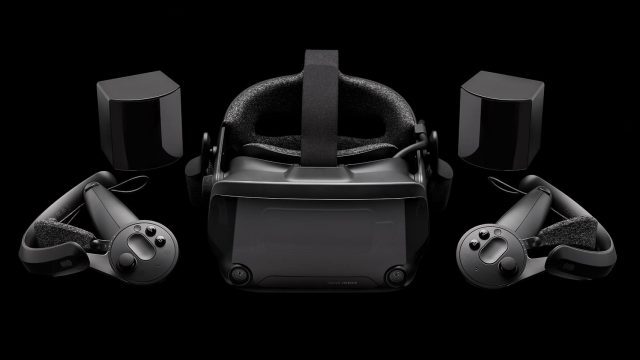
If you’re looking for the very best overall PC VR headset, Valve Index is our pick. It’s pricey compared to the rest, but has an excellent balance of quality, performance, and comfort. That’s why we called it “the enthusiast’s choice” in our full review of the headset.
Pros
Things to love about Index are its excellent tracking performance, wide field of view, quality controllers, great audio, and range of ergonomic adjustments that make it easy to dial in a comfortable and clear fit.
Index is one of the only headsets that offers an eye-relief adjustment. This let’s you bring the lenses as close to your eyes as comfortable, allowing you to maximize your field of view; it also makes the headset easier to adjust for glasses. Index has a physical IPD adjustment which ranges from 58mm to 70mm, making it easy to align the lenses with the width of your eyes for the sharpest visuals.
Cons
But Index isn’t perfect. Compared to other headsets on the market, the external tracking system is more work to set up, typically requiring two tracking beacons mounted on opposite corners of a room, stuck on a tripod, placed up high on a shelf, or screwed into your wall. They also need to be plugged into their own power outlets. And while Index has cameras on the front for a pass-through view, it isn’t as quick or useful as we’ve seen on other headsets. Its resolution is on the low-end compared to the latest headsets, and did we mention the price tag of $1,000? You can get it cheaper though if you already have SteamVR Tracking base stations from an old Vive headset.
Valve Index Specs
| Resolution | 1,440 x 1,600 (2.3MP) per-eye, LCD (2x) |
| Refresh Rate | 80Hz, 90Hz, 120Hz, 144Hz |
| Lenses | Double element Fresnel |
| Field-of-view | ~130° diagonal |
| Optical Adjustments | IPD, eye-relief |
| IPD Adjustment Range | 58–70mm |
| Connectors | USB 3.0, DisplayPort 1.2, 12V power |
| Cable Length | 5m + 1m breakaway |
| Tracking | SteamVR Tracking 1.0 or 2.0 (external beacons) |
| On-board cameras | 2x RGB |
| Input | Valve Index controllers (rechargable battery) |
| Audio | Off-ear headphones, 3.5mm aux output |
| Microphone | Dual microphone |
| Pass-through view | Yes |
Content Compatibility
Valve Index is officially compatible with the SteamVR library where the vast majority of VR content is available. If you’re looking to play content that’s exclusive to the Oculus PC library (like Lon Echo II) you can use the free but unofficial Revive mod to play Oculus PC content on Valve Index. It may take some tweaking for performance and controller inputs, but for the most part Oculus content will play reasonably well on Index.
Also Consider: HP Reverb G2 – $500
While Valve’s Index has great all-around performance, HP’s latest Reverb G2 is the headset you want if resolution is your most important consideration. Reverb G2 should be on your radar especially if you’re thinking of picking up a VR headset for seated PC VR games like driving and flight simulators—find out why in our full review.
ℹ HP has also released a slightly updated version of the headset (which we call the Reverb G2.1) that makes some small but noticeable improvements. Read more about Reverb G2.1 here.
Pros
When it comes right down to it, G2’s defining feature is its class-leading resolution of 2,160 × 2,160, which can look downright amazing with the right content. Thanks to a collaboration between Valve and HP, G2 also borrows the excellent headphones of Valve’s Index headset and brings improved controllers compared to previous WMR headsets. Not to mention the headset has inside-out tracking which makes it easier to use thanks to no external trackers. And who can argue with it being nearly half the price of the full Valve Index kit?
Cons
Although it boasts improved controller ergonomics compared to prior WMR headsets, Reverb G2’s controller tracking still has more latency and less reliability than its peers, along with less detailed (and somewhat noisy) haptics. The controllers will get you through most games just fine, but if you plan to primarily play competitive or fast-paced games, the controllers on other headsets tend to deliver better results. As for field of view, G2 is similar to most of its peers but loses out compared to Index. The pass-through view also isn’t as useful as some other headsets because of its odd ‘flashlight’ implementation.
HP Reverb G2 Specs
| Resolution | 2,160 x 2,160 (4.7MP) per-eye, LCD (2x) |
| Refresh Rate | 90Hz |
| Lenses | Single element Fresnel |
| Field-of-view (claimed) | 114° diagonal |
| Optical Adjustments | IPD (two-stage eye-relief with Reverb G2.1) |
| IPD Adjustment Range | 60–68mm |
| Connectors | USB-C, DisplayPort, Power |
| Cable Length | 6m |
| Tracking | Inside-out (no external beacons) |
| On-board cameras | 4x IR |
| Input | Reverb G2 controllers (AA battery 2x), voice |
| Audio | Off-ear headphones |
| Microphone | Yes |
| Pass-through view | Yes |
Content Compatibility
HP Reverb G2 works natively with the Windows Mixed Reality store, but very few VR applications are available there. Fortunately a free and official plugin from Microsoft also makes it compatible with SteamVR content. If you’re looking to play content that’s exclusive to the Oculus PC library (like Lone Echo II) you can use the free but unofficial Revive mod to play Oculus PC content on Reverb G2.
For the Ultra Enthusiast: Varjo Aero – $2,000+
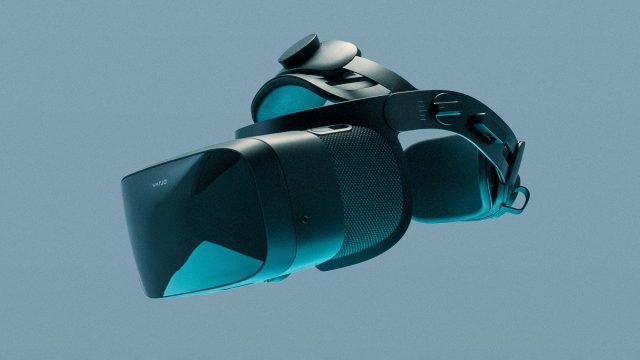
If you have cash to spare, and especially if you’re looking for the ultimate VR sim setup, Varjo Aero could be a great fit. It has the most impressive visual clarity we’ve seen from any consumer-available headset, thanks to a very high resolution display and unique lenses. It also has some other nice-to-have features not found on most other headsets. But it’ll cost you far more than other headsets. For a deep dive, check out our full Varjo Aero review.
Pros
If you can even put a headset that’s this expensive in the same category as other consumer VR headsets, Varjo Aero easily has the sharpest, most immersive image thanks to its 2,880 x 2,720 (7.8MP) per-eye resolution. On top of that, the headset uses aspheric (rather than Fresnel) lenses, which means it doesn’t suffer from the glare and god-rays that plague most other headsets. Aero also has two features that aren’t available on most headsets: automatic IPD adjustment and eye-tracking. The latter can be used for foveated rendering and some other useful stuff, but most applications today don’t support it.
Cons
Aero’s biggest downsides are its price, lack of integrated audio, and some image distortion. The headset alone costs $2,000, and if you don’t already have SteamVR Tracking base stations and controllers, you’ll need to shell out an additional $580 to get them. And let’s not forget… in order to really get the most from the headset, you’ll need a PC capable of pushing all those pixels at high framerates; if you don’t already have a beast of a PC, this one might not be the best choice (Varjo recommends at least an RTX 3070 or RTX 2080 and Aero does not support AMD GPUs).
As for the lack of integrated audio—you’ll need to plug headphones or earbuds into the headset’s 3.5mm aux port, which means another wire to deal with and another thing to put on and take off every time you use the headset. And while the Aero’s image is incredibly sharp, it does suffer from distortion near the edges of the lens which can bother some people more than others.
Varjo Aero Specs
| Resolution | 2,880 x 2,720 (7.8MP) per-eye, mini-LED LCD (2x) |
| Refresh Rate | 90Hz |
| Lenses | Aspheric |
| Field-of-view (claimed) | 134° diagonal, 115° horizontal (at 12mm eye-relief) |
| Optical Adjustments | IPD (automatic motor driven) |
| IPD Adjustment Range | 57–73mm |
| Connectors | USB-C → breakout box (USB-A 3.0, DisplayPort 1.4) |
| Cable Length | 5m |
| Tracking | SteamVR Tracking 1.0 or 2.0 (external beacons) |
| On-board cameras | 2x eye-tracking |
| Input | None included (supports SteamVR controllers) |
| Audio | 3.5mm aux port |
| Microphone | None (supports external mic through aux port) |
| Pass-through view | No |
| Weight | 487g + 230g headstrap with counterweight |
Content Compatibility
Varjo Aero is officially compatible with the SteamVR library where the vast majority of VR content is available. If you’re looking to play content that’s exclusive to the Oculus PC library (like Lone Echo II) you can use the free but unofficial Revive mod to play Oculus PC content on Varjo Aero. It may take some tweaking for performance and controller inputs, but for the most part Oculus content should work on Aero.
Value Pick: Meta Quest 2 with Link (and Elite Strap) – $460
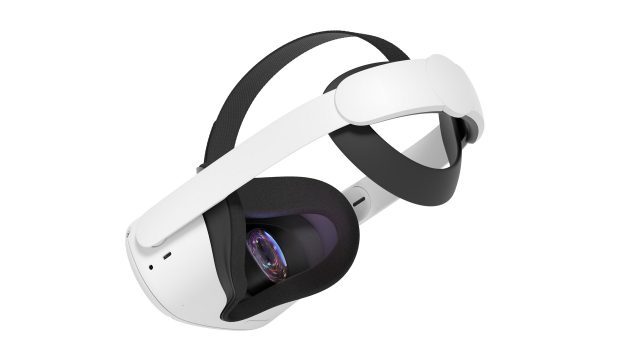
Although Quest 2 is a standalone headset (which means games run directly in the headset without plugging into a PC) it also has a feature called Oculus Link which gives you the option to run PC VR games by plugging into a PC. And if you have a modern router (Wi-Fi 5 or Wi-Fi 6), you can even do this wirelessly with Air Link feature.
Pros
Along with the useful passthrough feature, high resolution display, and great controllers, Quest 2 is a pretty great all-around headset. The hard-to-beat price makes it a great value, especially considering the fact that the headset also runs standalone VR games from the Meta Quest store. Meta has also consistently released software updates to improve the headset’s performance and features.
Cons
Unfortunately the cable that comes with Quest 2 isn’t long enough to work well for Oculus Link, and we can’t recommend the official cable because of its crazy $80 price tag. Thankfully you can get 26 feet worth of Oculus Link cable for $34. Or if you have a Wi-Fi 5 or Wi-Fi 6 router you can use Air Link to play PC VR games wirelessly.
And, as we found in our full review, we weren’t big fans of Quest 2’s soft headstrap, so we’d recommend dropping the extra $50 for the Elite Strap accessory [Amazon] if you’re serious about playing PC VR games. The built in audio is convenient, but we wish it was higher quality.
Meta Quest 2 Specs
| Resolution | 1,832 x 1,920 (3.5MP) per-eye, LCD (1x) |
| Refresh Rate | 60Hz, 72Hz, 90Hz, 120Hz |
| Lenses | Single element Fresnel |
| Field-of-view | ~90° diagonal |
| Optical Adjustments | IPD, eye-relief (via included spacer) |
| IPD Adjustment Range | 58mm, 63mm, 68mm |
| Processor | Snapdragon XR2 |
| RAM | 6GB |
| Storage | 128GB / 256GB |
| Connectors | USB-C |
| Battery Life | 2-3 hours |
| Tracking | Inside-out (no external beacons) |
| On-board cameras | 4x IR |
| Input |
Oculus Touch v3 (AA battery 1x), hand-tracking, voice
|
| Audio | In-headstrap speakers, 3.5mm aux output |
| Microphone | Yes |
| Pass-through view | Yes |
Content Compatibility
Without being plugged into a computer, Quest 2 can only play games from the Meta Quest library. If you plug into a computer via Oculus Link, you’ll have access to everything in the Oculus PC and SteamVR libraries as well. That means that Quest 2 is compatible with the vast majority of top VR content out there, as long as you’ve got a powerful PC to plug the headset into.
The Best Standalone VR Headsets in 2023
Standalone VR headsets are fully self-contained and don’t need to plug into anything. They generally offer high ease-of-use thanks to their all-in-one nature and lack of tether. With their low overall cost (thanks to not needing a high-end PC) standalone headsets are a great way to take your first step into VR.
The Best Overall: Meta Quest 2 with Elite Strap – $460

Quest 2 is an upgrade over its predecessor in almost every way, though it’s worth noting that you need a Facebook account to use the headset. It comes in a 128GB and 256GB version.
Pros
With an impressive resolution, powerful Snapdragon XR2 processor, useful ‘passthrough’ view feature, and great controllers, there’s a lot to like about Quest 2. What’s more, if you ever decide to upgrade to PC-powered VR, Quest 2 can plug into your computer and be used like a PC VR headset. When it comes to overall value, no other standalone headset is in the same ballpark right now. And another nice thing about the headset: it keeps getting better with each update.
Cons
There’s a few things we wish were better though. As we found in our full Quest 2 review, the included soft headstrap just isn’t that comfortable, which is why we recommend the Elite Strap ($60 on Amazon) or Elite Battery Strap ($120 on Amazon) accessories if you’re a serious VR user.
The hidden built-in speakers are convenient but we wish they were more powerful for better immersion (luckily there’s a 3.5mm headphone jack if you want to use your own headphones). And while Quest 2 has a pretty strong game library, since it’s a standalone headset you won’t be able to play any of the big PC VR games like Half-Life: Alyx or Asgard’s Wrath unless you have a powerful PC to plug into.
Meta Quest 2 Specs
| Resolution | 1,832 x 1,920 (3.5MP) per-eye, LCD (1x) |
| Refresh Rate | 60Hz, 72Hz, 90Hz, 120Hz |
| Lenses | Single element Fresnel |
| Field-of-view | ~90° diagonal |
| Optical Adjustments | IPD, eye-relief (via included spacer) |
| IPD Adjustment Range | 58mm, 63mm, 68mm |
| Processor | Snapdragon XR2 |
| RAM | 6GB |
| Storage | 128GB / 256GB |
| Connectors | USB-C |
| Battery Life | 2-3 hours |
| Tracking | Inside-out (no external beacons) |
| On-board cameras | 4x IR |
| Input |
Oculus Touch v3 (AA battery 1x), hand-tracking, voice
|
| Audio | In-headstrap speakers, 3.5mm aux output |
| Microphone | Yes |
| Pass-through view | Yes |
Content Compatibility
Meta Quest 2 is compatible with all content in the Meta Quest library. If you have a gaming PC (or get one in the future), you can plug it into your PC to play content in the Oculus PC library and the SteamVR library.
For the Ultra Enthusiast: Meta Quest Pro – $1,500
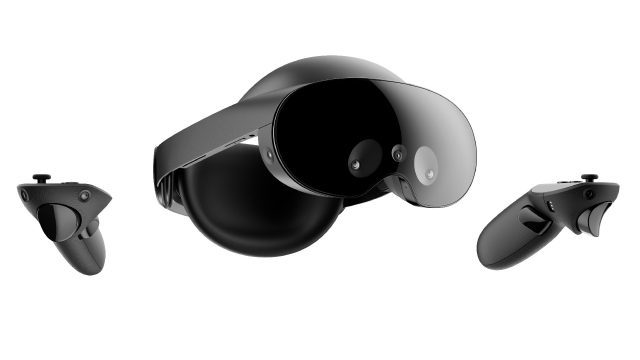
Although Meta is heavily marketing Quest Pro as a ‘mixed reality’ headset, Quest Pro is also essentially a better Quest 2 in almost every way. While the upgrades are nice, they won’t justify the extra $1,000 in cost for anyone but hardcore VR users; we explain why in our full Quest Pro review.
Pros
You can think of Quest Pro as a more compact Quest 2 with better visual clarity, better controllers, a better passthrough view, and some neat new features like face-tracking. Although the resolution is the same as Quest 2, the lenses are better which makes the image a bit sharper and improves clarity by eliminating glare caused by Quest 2’s less sophisticated lenses. The new controllers are self-tracking, which means they won’t lose tracking when they’re out of sight of the headset and they’re more compact. An included charging dock for both the headset and the controllers is also a nice touch which means your headset will always be charged and updated when you’re ready to play.
Cons
Given that Quest Pro is being pushed as a mixed reality headset, Meta opted for an open-front design which means you’ll be able to see the outside world more easily. This is nice for when you’re using the passthrough view, but for VR applications it can be less immersive. The headset includes some snap-on blinders that close off some of that outside view for more immersion, but you’ll have to drop an extra $50 for the ‘full light blocker‘ if you want maximum immersion from the headset.
Additionally, Quest Pro’s lack of top-strap makes the headset less comfortable for some than it could be and its battery life is pretty short at 1–2 hours. And finally, the headset’s most unique features, like full face-tracking and better passthrough for AR applications, are rather underutilized at this stage in the headset’s life.
Quest Pro Specs
| Resolution | 1800 × 1920 (3.5MP) per-eye, LCD (2x) |
| Refresh Rate | 72Hz, 90Hz |
| Optics | Pancake non-Fresnel |
| Field-of-view (claimed) | 106°H × 96°V |
| Optical Adjustments | Continuous IPD, continuous eye-relief |
| IPD Adjustment Range | 55–75mm |
| Processor | Snapdragon XR2+ |
| RAM | 12GB |
| Storage | 256GB |
| Connectors | USB-C |
| Weight | 722g |
| Battery Life | 1–2 hours |
| Headset Tracking | Inside-out (no external beacons) |
| Controller Tracking | Inside-out (headset line-of-sight not needed) |
| Expression Tracking | Yes (eyes, face) |
| On-board cameras | 5x external, 5x internal |
| Input | Touch Pro controllers (rechargeable), hand-tracking, voice |
| Audio | In-headstrap speakers, dual 3.5mm aux output |
| Microphone | Yes |
| Pass-through view | Yes (color) |
| MSRP | $1,500 |
Content Compatibility
Meta Quest Pro is compatible with all content in the Meta Quest library. If you have a gaming PC (or get one in the future), you can plug it into your PC to play content in the Oculus PC library and the SteamVR library.
Value Pick: Meta Quest 2 – $400
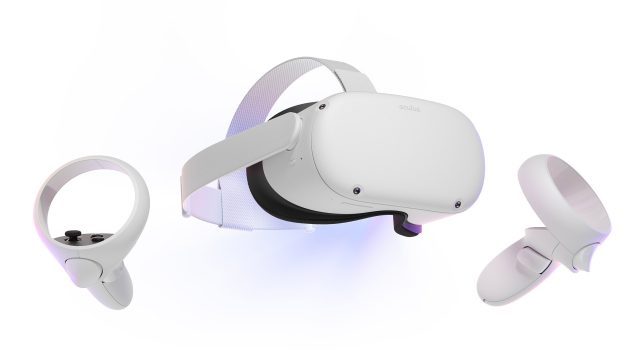
Yup, our value pick for standalone headset is the same as our ‘Best Overall’ pick: Quest 2! But if you’re brand new to VR and are just looking for a taste, you can probably hold off on the Elite Strap accessory and save yourself $60 in the meantime. If you find yourself using the headset often you can always add the strap later.
See the Quest 2 section above for thoughts and details on Quest 2.
The Best Console VR Headsets in 2023
If you know anything about VR, you’ll already know what we’re going to say! PlayStation is the only console maker that currently supports a VR headset (sorry Xbox fans). And unfortunately only Sony’s own headsets work with its consoles.
But at least that makes things easy. If you’re using PS4, the original PSVR is the best (and only) headset that will work with the console.
If you’re using PS5, the soon-to-launch PSVR 2 is the obvious choice. Even though the original PSVR is technically compatible with PS5 (if you get a special adapter), PSVR 2 is a big improvement across the board and will be the only headset to support the latest generation of VR games and content on PS5.
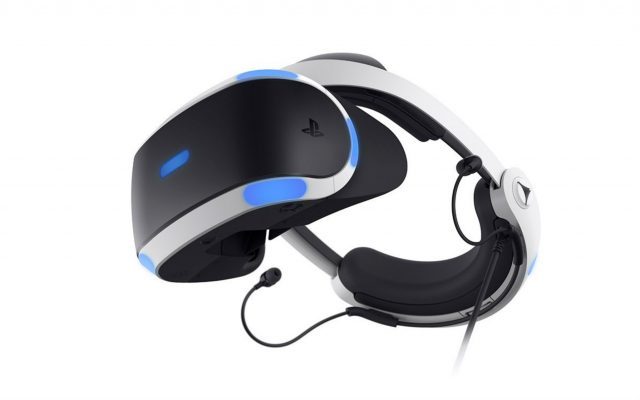
Our Take
PSVR launched in late 2016 and was a great headset for its era, including a handful of excellent exclusive VR games that you won’t find anywhere else. However, the headset is officially past its prime in 2023 and feels ‘last generation’ in resolution, tracking, and controllers compared to what’s available elsewhere in the VR landscape.
It’s hard to recommend buying the six year old PSVR today. It’s becoming increasingly difficult to find new units at reasonable prices. Bundles are typically priced at $350, but good luck finding those in-store or online anymore. Ebay has a number of pre-owned options alongside unreasonably expensive new in-the-box units, so choose wisely.
That’s certainly because Sony is planning to launch its next-gen PSVR 2 on February 22nd.
PSVR Specs
| Resolution | 960 x 1,080 (1.0MP) per-eye, RGB OLED (1x) |
| Refresh Rate | 90Hz, 120Hz |
| Lenses | Single element non-Fresnel |
| Field-of-view | 100° diagonal |
| Optical Adjustments | Eye-relief |
| Connectors | USB, HDMI |
| Cable Length | 4.4m (breakout box) |
| Tracking | Outside-in (external camera) |
| On-board cameras | None |
| Input |
DualShock 4 (rechargeable), PS Move (rechargeable), PS Aim (rechargeable), voice
|
| Audio | Earbuds, 3.5mm aux output |
| Microphone | Yes |
| Pass-through view | No |
Content Compatibility
PlayStation VR is only compatible with select VR content in the PlayStation store and does not support PSVR 2 games. However, its back-catalog includes a handful of excellent exclusives not available on PSVR 2 like Astro Bot Rescue Mission and Blood & Truth. You can also use the headset to play non-VR PS4 or PS5 content in a ‘theater mode’ through the headset, but with relatively low resolution it’s not something you’re likely to do often. The vast majority of PSVR titles are also backwards compatible with PS5.
Upcoming: PlayStation VR 2 – $550
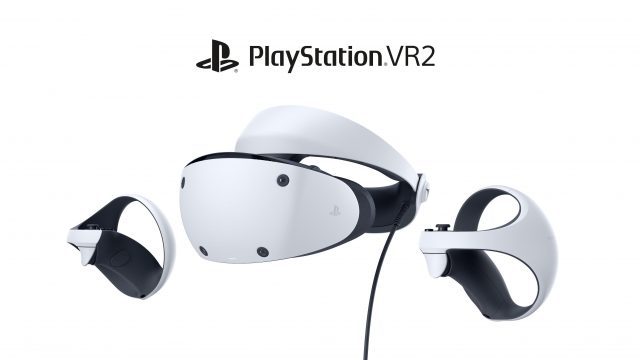
Launching in February, PlayStation VR 2 will finally bring an upgrade to Sony’s VR platform, but it will only be compatible with PS5. Priced at $550, it’s more expensive than something like Quest 2, but if you’ve already got a PS5 you’re likely to get a higher-fidelity VR experience thanks to the game console being far more powerful than the standalone Quest 2.
PSVR vs. PSVR 2 Specs
| Resolution | 2,000 x 2,040 (4.1MP) per-eye, OLED, HDR | 960 x 1,080 (1.0MP) per-eye, RGB OLED |
| Refresh Rate | 90Hz, 120Hz | 90Hz, 120Hz |
| Lenses | Fresnel | Single element non-Fresnel |
| Field-of-view (claimed) | 110° (diagonal presumed) | 100° (diagonal presumed) |
| Optical Adjustments | IPD, eye-relief | Eye-relief |
| Connectors | USB-C (no breakout box) | USB, HDMI (breakout box) |
| Cable Length | unknown | 4.4m |
| Tracking | Inside-out (no external beacons) | Outside-in (external camera) |
| On-board cameras | 4x IR (external), 2x IR (internal) | None |
| Input | PSVR 2 Sense controllers (rechargable), eye-tracking | DualShock 4 (rechargeable), PS Move (rechargeable), PS Aim (rechargeable), voice |
| Audio | 3.5mm aux output | 3.5mm aux output |
| Microphone | Yes | Yes |
| Haptics | Controllers, headset | Controllers |
| Weight | unknown | 600g |
| Release Date | 2023 | 2016 |
| Console Compatibility | PS5 | PS4, PS4 Pro, PS5 |
Content Compatibility
PSVR 2 is unfortunately not backwards compatible with PSVR games. That means it only supports games in the PlayStation store that are specifically marked with PSVR 2 support.

